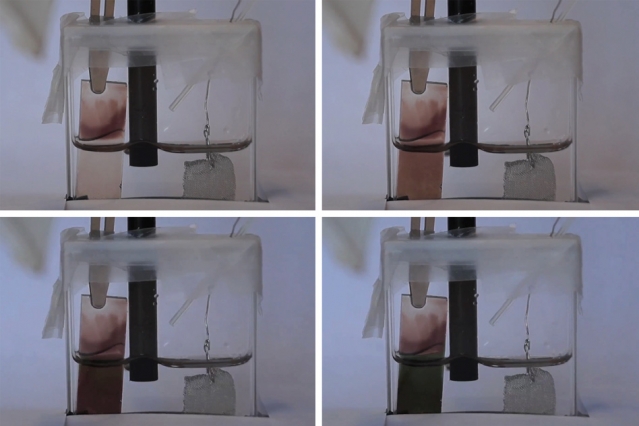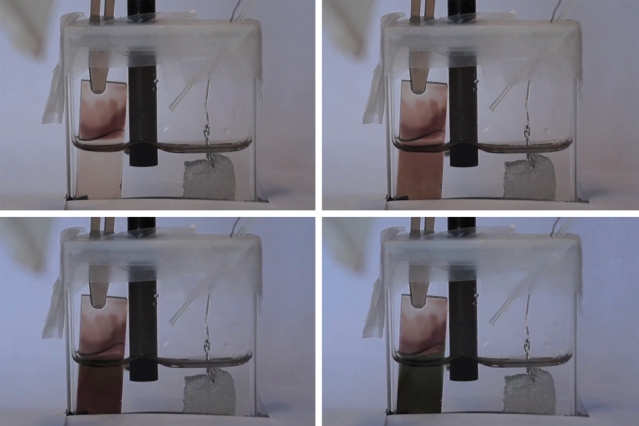It wasn’t long ago we told you about the recent Harvard University researchers who created windows that transformed from transparent to opaque with just the flick of a switch, but now a team from MIT has taken that idea one step further.
The researchers developed a new way of making windows switch from transparent to opaque — with no power. The new technology could potentially save energy by blocking sunlight on hot days and reduce air-conditioning costs.

The new method offers significant advantages by combining rapid response times and low power needs.
How it works
Once the glass is switched from clear to dark, or vice versa, the new system requires little-to-no power to maintain its new state. Unlike other materials, it only requires electricity when it’s time to switch back again.
The results are reported this week in the online journal Chem, in a paper by , doctoral student Khalid Al-Kaabi, and former postdoc Casey Wade, now an assistant professor at Brandeis University.
The new discovery employs electrochromic materials, which change their color and transparency when a voltage is applied. These materials differ from photochromic materials like those found in some eyeglasses that become darker when the light gets brighter since those materials tend to have a slower response time and to undergo a smaller change in their levels of opacity.
Existing electrochromic materials suffer from similar limitations and have found only niche applications. According to MIT, one such application is that of use in Boeing 787 aircraft which have electrochromic windows that get darker to prevent bright sunlight from glaring through the cabin. The windows can be darkened by turning on the voltage, but “when you flip the switch, it actually takes a few minutes for the window to turn dark. Obviously, you want that to be faster,” according to MIT professor of chemistry Mircea Dincă.
That slowness can be attributed to the changes within the material that rely on a movement of electrons — an electric current — giving the whole window a negative charge. Positive ions then move through the material to restore the electrical balance and create the color-changing effect. However, while electrons move rapidly through materials, ions move much more slowly, and limit the overall reaction speed.
The researchers overcame this challenge by using sponge-like materials called metal-organic frameworks (MOFs), which conduct both electrons and ions at very high speeds. These materials have been used for about 20 years because of their ability to store gases within their structure, but the MIT team was the first to harness them for their electrical and optical properties.
Another issue with existing versions of self-shading materials, according to the researchers, is getting a material to go from completely transparent to completely opaque. Even the windows in the 787 can only change to a dark shade of green, rather than becoming opaque.
The new material is created by combining two chemical compounds, an organic material and a metal salt. When mixed, they self-assemble into a thin film of the switchable material.
“It’s this combination of these two, of a relatively fast switching time and a nearly black color, that has really got people excited,” said Dincă.
In addition to simply preventing glare, the new windows could lead to energy savings by reducing the need for air conditioner.
“You could just flip a switch when the sun shines through the window, and turn it dark,” or even automatically make that whole side of the building go dark all at once, according to Dincă.
So far, the properties of the material have been demonstrated in the lab, but the team now plans to make a small-scale 1-inch-square sample for testing, to demonstrate the principle in action for potential investors in the technology, and to determine what the manufacturing costs for such windows would be.
In addition to smart windows, the material could be used for some versions of low-power displays, like the ones that display electronic ink that is used in devices such as the Kindle.


Comments are closed, but trackbacks and pingbacks are open.